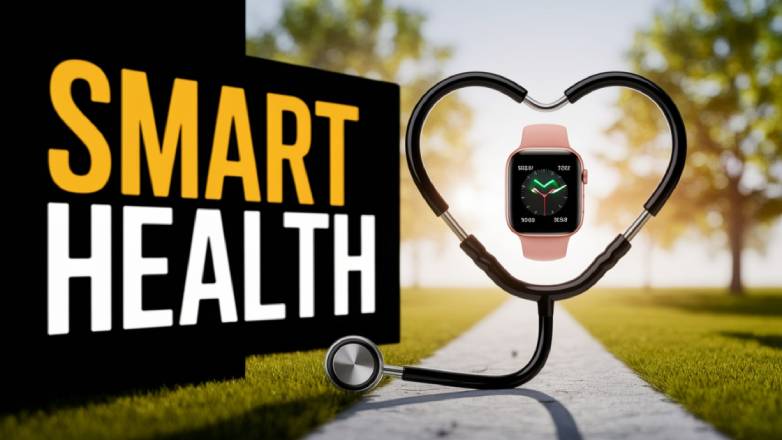Introduction
In today’s digital world, your wrist may know more about your health than your doctor does. Devices like the Apple Watch, Fitbit, WHOOP, and Garmin are no longer just fitness accessories—they're becoming health companions, tracking everything from heart rate and sleep to blood oxygen levels and even detecting serious conditions like atrial fibrillation.
But as these devices become more advanced, an important question emerges: Are smartwatches the new stethoscopes? Can wearable tech help detect illness earlier, manage chronic conditions, and reshape personal healthcare?
Let’s explore how wearable technology is redefining health—and the limitations we need to keep in mind.
1. What Wearable Health Tech Can Do Today
Modern wearables now offer a wide range of health-monitoring features:
Heart Rate Monitoring
Tracks resting heart rate, heart rate variability (HRV), and exertion levels. Some provide continuous tracking and can flag irregularities.
Sleep Tracking
Monitors sleep stages (light, deep, REM), duration, and quality—valuable since poor sleep is tied to health risks like diabetes and cardiovascular disease.
Blood Oxygen (SpO₂) Monitoring
Detects blood oxygen saturation, which can indicate respiratory concerns including early COVID-19 or sleep apnea.
ECG and Arrhythmia Detection
The Apple Watch Series 4+ offers on-demand ECG and can flag possible atrial fibrillation (AFib).
Stress and Recovery Tracking
WHOOP and Fitbit use HRV and other signals to monitor stress, fatigue, and recovery—valuable for athletes and professionals alike.
2. Bridging the Gap Between Fitness and Clinical Care
What sets modern wearables apart is their integration into preventive and remote healthcare.
Integration with Healthcare Providers
- Platforms like Apple HealthKit and Fitbit Health Solutions connect with electronic health records (EHRs)
- Patients can share real-time health data with doctors
- Hospitals are using wearables in cardiac rehab and post-surgical care
In some cases, wearables have flagged heart irregularities weeks before traditional diagnoses—adding an extra layer of early warning.
3. Benefits of Wearable Health Tech
Early Detection of Health Issues
- Flags abnormal trends in heart rate, oxygen, or sleep
- Helps with timely intervention and reduced ER visits
Chronic Disease Management
- Supports tracking of hypertension, diabetes, and sleep disorders
- Encourages lifestyle change through real-time feedback
Empowered Patients
- Users feel more in control of their health
- Behavioral nudges and data improve long-term habits
Enhanced Fitness and Motivation
- Tracks movement, workouts, calories
- Gamification and challenges boost engagement
4. Limitations and Concerns
Despite the buzz, wearables aren’t medical-grade—and they come with caveats.
Accuracy Varies by Device and Activity Type
- Consumer-grade sensors like the Apple Watch perform better at rest but may show higher error rates during intense physical activity
- Devices differ significantly in how accurately they measure sleep stages, heart rate during motion, and other metrics
- Fitbit, Garmin, WHOOP, and others perform differently across various use cases, according to clinical comparisons
False Alarms and Health Anxiety
- Alerts may cause unnecessary stress
- Users may self-diagnose based on raw data without context
Data Privacy Risks
- Many health apps share data with third parties
- Users may not realize how their personal health info is stored or monetized
A 2021 study revealed nearly 80% of mobile health apps share data, often without clear disclosure.
5. The Future of Wearable Health Tech
Expect rapid advances in the coming years:
- Non-invasive glucose monitors
- Continuous blood pressure tracking
- AI-driven health alerts
- Smart clothing and biosensors for 24/7 vitals
Future wearables will integrate with:
- Telemedicine platforms
- AI diagnostics
- Personal health dashboards
- Genomics and lifestyle data
6. Should Doctors Start Prescribing Wearables?
Some already are.
- Cardiologists, endocrinologists, and sleep specialists are recommending devices
- Remote monitoring is now reimbursed by Medicare and some insurance plans
But to scale this, we need:
- Standardized accuracy across brands
- Integration into clinical workflows
- Training for doctors to interpret wearable data effectively
Conclusion
Smartwatches and wearables aren’t replacing the stethoscope—but they are complementing it in today’s digital healthcare revolution. They offer early warnings, empower patients, and provide valuable data to providers.
Yet their accuracy varies based on device and context—and that’s a crucial point users and providers must understand.
As wearables evolve and become more precise, they hold the promise to transform everyday monitoring into proactive, personalized care—bridging the gap between fitness and medicine.







